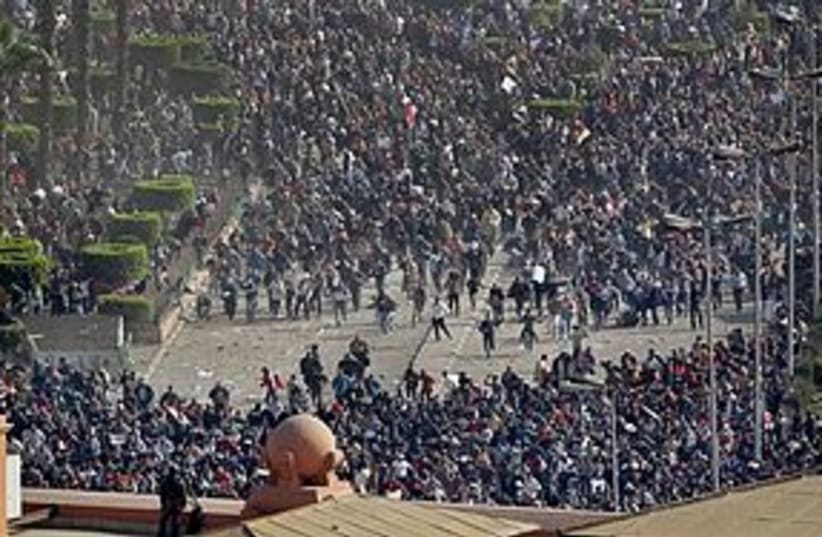RELATED:Cairo: At least 3 anti-gov't demonstrators shot deadRattling the Cage: Enemy of Arab democracy – that’s usReporter's Notebook: Coffee and politics in CairoHussein Ibrahim, 45, with gray hair and gray mustache and flannel suit, was one of the protesters in favor of Mubarak staying in power for another seven months, until the election.“For 30 years, Mubarak has preserved Egypt’s stability,” he said, against “Qatar, Iran, Hizbullah and Hamas and other who wish to destroy it.”He was part of a group headed to Tahrir square, chanting, “With our spirit and blood, we will defend and die for you, Mubarak!” Passersby cursed the Mubarak-supporters, calling them “crazy donkeys” and “stooges of the regime.”Meantime, soldiers directed Ibrahim’s group away from a checkpoint close to the American Embassy.At the offices in Garden City of Al-Masry Al-Youm, an independent opposition newspaper that is regarded as the most influential in Egypt, the chief editors had ordered the place evacuated. Rumors spread that the independent Al-Shorouk daily had come under attack earlier in the day.This reporter relocated to a second Al- Masry Al-Youm office downtown, a blocks from Garden City, while others decided to work from home.The office downtown came under attack, however, during the writing of this article.A commotion broke out at 4 p.m., with people screaming and running to pick up their steel rods.Panic broke out as passing vigilante security groups outside the office were momentarily misidentified as thugs.
Eyewitness: The people against the police
It would appear that the people of Egypt have decided to take responsibility for their own fate, rather than blame foreign powers.

RELATED:Cairo: At least 3 anti-gov't demonstrators shot deadRattling the Cage: Enemy of Arab democracy – that’s usReporter's Notebook: Coffee and politics in CairoHussein Ibrahim, 45, with gray hair and gray mustache and flannel suit, was one of the protesters in favor of Mubarak staying in power for another seven months, until the election.“For 30 years, Mubarak has preserved Egypt’s stability,” he said, against “Qatar, Iran, Hizbullah and Hamas and other who wish to destroy it.”He was part of a group headed to Tahrir square, chanting, “With our spirit and blood, we will defend and die for you, Mubarak!” Passersby cursed the Mubarak-supporters, calling them “crazy donkeys” and “stooges of the regime.”Meantime, soldiers directed Ibrahim’s group away from a checkpoint close to the American Embassy.At the offices in Garden City of Al-Masry Al-Youm, an independent opposition newspaper that is regarded as the most influential in Egypt, the chief editors had ordered the place evacuated. Rumors spread that the independent Al-Shorouk daily had come under attack earlier in the day.This reporter relocated to a second Al- Masry Al-Youm office downtown, a blocks from Garden City, while others decided to work from home.The office downtown came under attack, however, during the writing of this article.A commotion broke out at 4 p.m., with people screaming and running to pick up their steel rods.Panic broke out as passing vigilante security groups outside the office were momentarily misidentified as thugs.